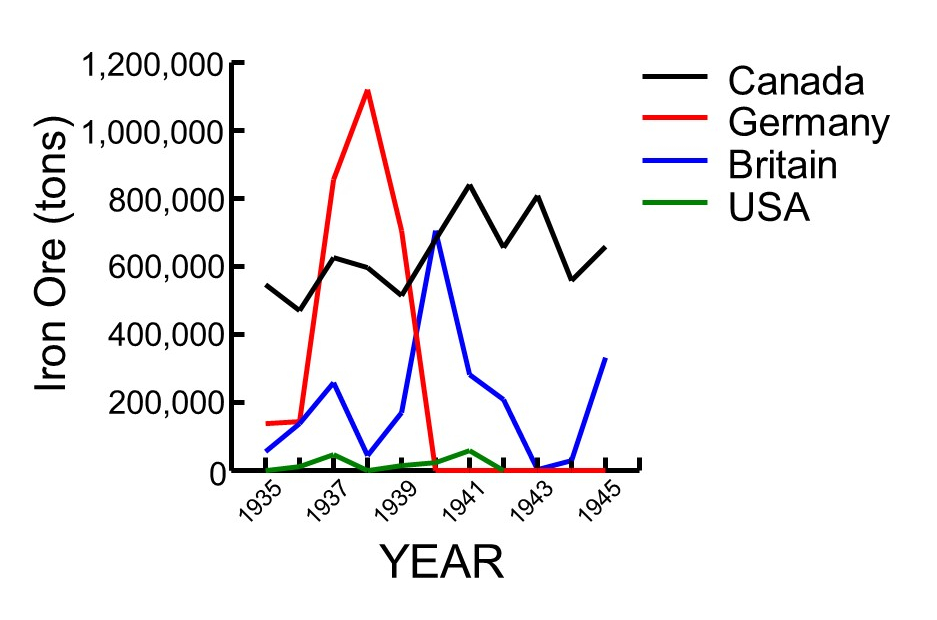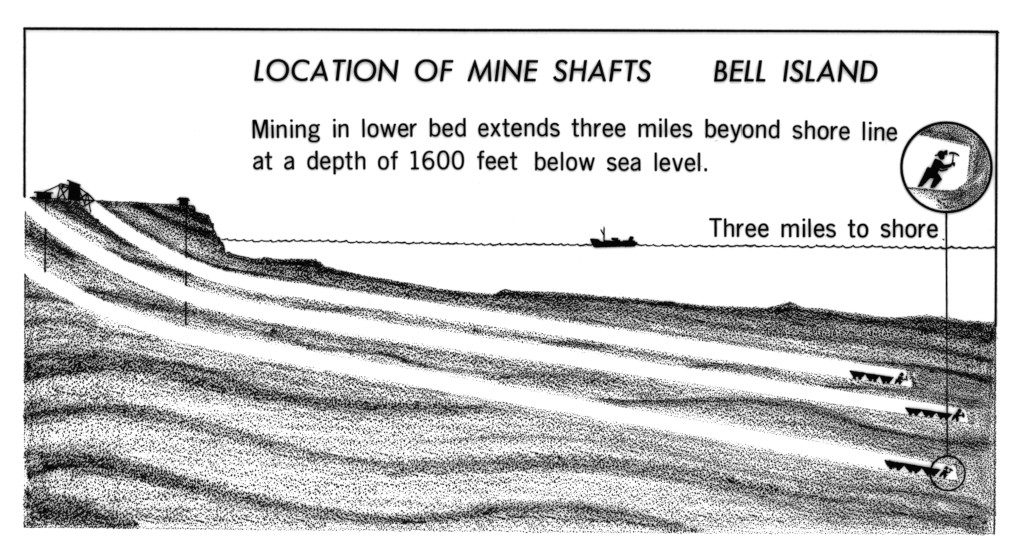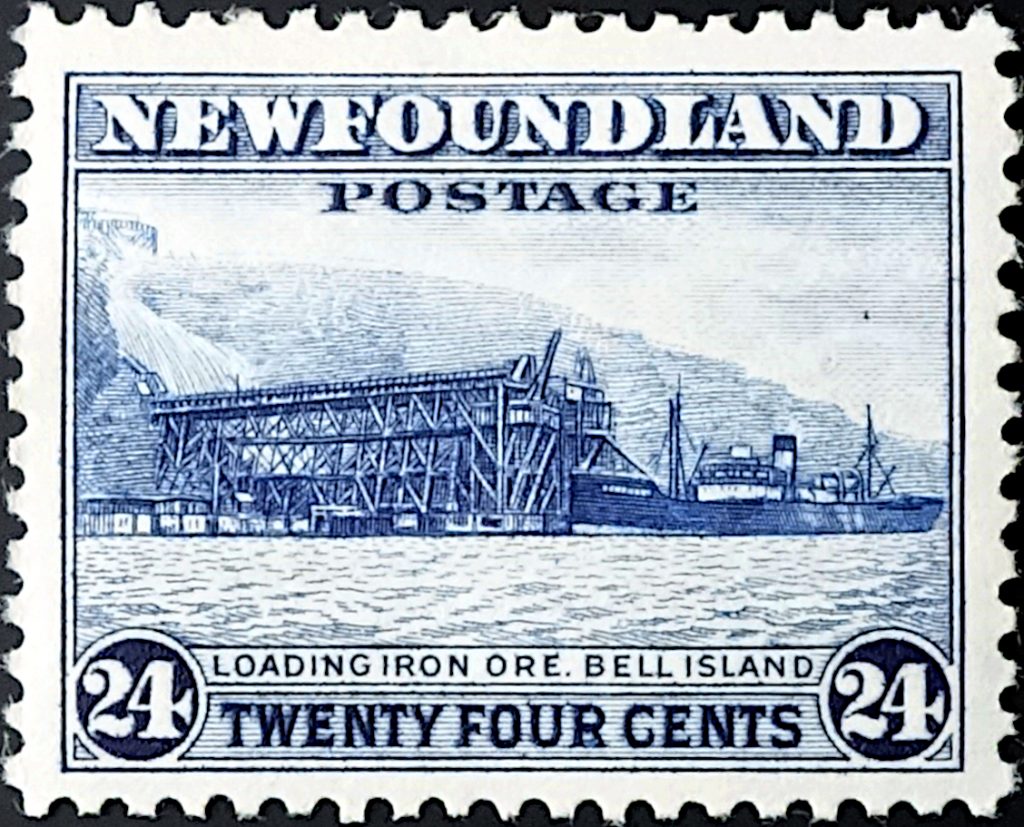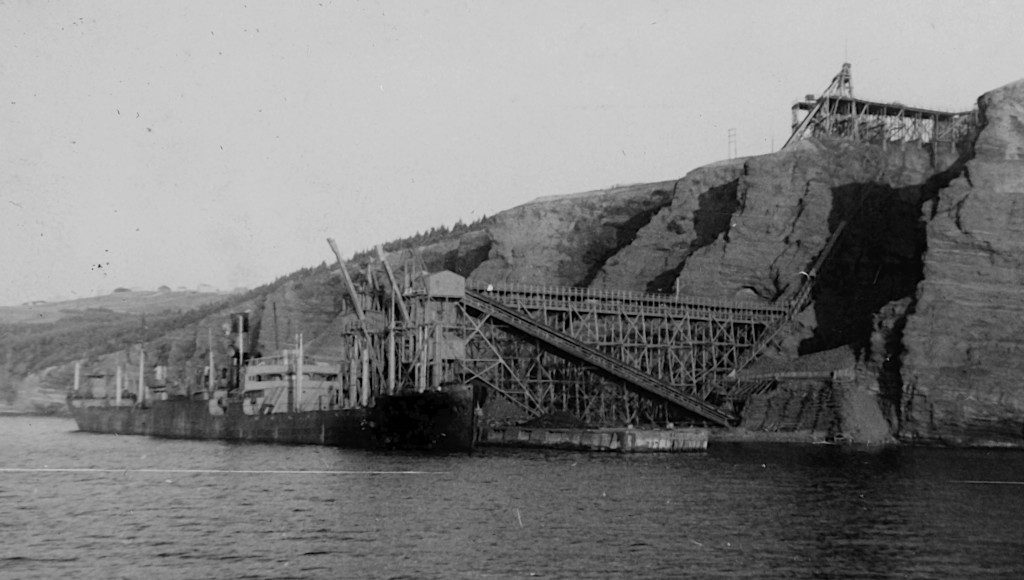Shipping Iron Ore from the Bell Island Mines
It was perhaps ironic that Nazi Germany was one of the largest customers for iron ore from Bell Island in the years leading up to World War II. Hitler’s priority before the war was building up the size of Germany’s army, navy and air force, and that required large amounts of iron and steel.
Between 1935 and the start of the war in 1939, the Bell Island mines shipped almost three million tons of iron ore to Germany. In fact, the last ship left Bell Island for Germany just six days before the Nazis invaded Poland and started the war. Once war was declared, the iron ore shipments from Bell Island to Germany stopped, and shipments to Sydney, Nova Scotia and Britain increased.
Iron ore was mined underground at Bell Island and the mine shafts extended several kilometres out under the Atlantic Ocean.
Ore was loaded on cargo ships using conveyor belts at two large piers on the shoreline. The loaded ships anchored just off Bell Island, and waited until a convoy was formed to lead them to Sydney.
The Royal Canadian Navy provided warships to escort the convoys and protect them from German submarines (called U-boats). However, in 1942 the U-boats had sunk numerous cargo ships and Navy escorts along Canada’s east coast. Soon the U-boats would come hunting off Bell Island.





